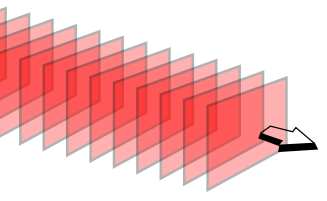I'm currently learning Quantum Mechanics from online video lectures and resources. In most of the web articles and videos, the wave functions are shown as circular waves $e^{i\omega t}$ instead of planar waves $\sin{\omega t}$.
[Note: I'm considering a fixed position and hence the equation $e^{i(k\cdot r + \omega t)}$ reduces to $e^{i\omega t}$]
Some examples from the web:
This video shows the wave amplitude to be rotating around the position (i.e. a circular wave in accordance with $e^{i\omega t}$): Quantum Wave Function Visualization
The Wikipedia Article on Schrödinger equation describes the plane wave using $e^{i(k\cdot r + \omega t)}$ instead of $\sin{\omega t}$ even though they call it a planar wave: Schrödinger equation
In this Video the derivation of Probability density is based on a circular wave: Quantum Mechanics 1 Lecture 3

